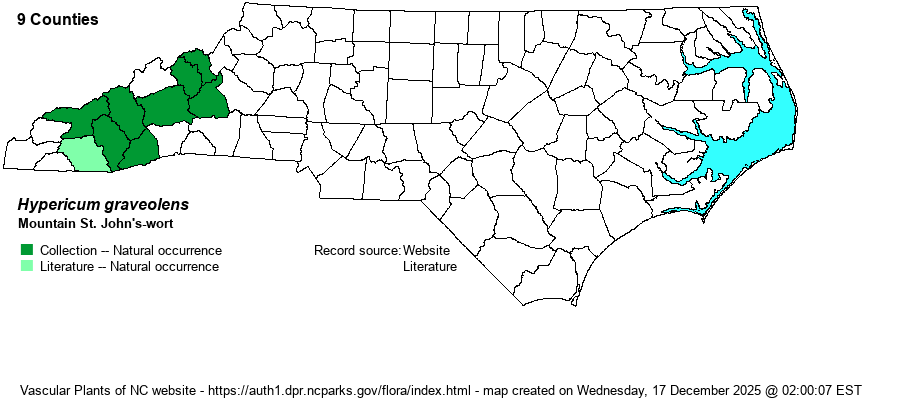| Author | Buckley | |
| Distribution | Strictly in the Mountains (at higher elevations as well), north to Mitchell County. As it occurs in northeastern TN, it could occur a bit farther north in the NC Mountains.
This is a narrow Southern Appalachian endemic, known so far only in NC and TN. The southernmost counties are Transylvania and Jackson.
| |
| Abundance | Within its limited high elevation habitat (mostly over 4500 feet), it is uncommon to locally fairly common. This is a Watch List species in NC. | |
| Habitat | This species is found mostly in exposed rocky places, such as around granitic domes, other rock outcrops, rocky forests, and roadbanks. It may occur around seepages, but it is not really a plant of such seepage areas. |
| Phenology | Blooms and fruits mostly in July. | |
| Identification | This is a slender, mostly erect and unbranched, herb that grows in small colonies, reaching only 1 foot tall on average. It has opposite, ovate leaves that are sessile/clasping, and they reach about 1-1.5 inches long. It is very similar to H. mitchellianum, with which it hybridizes. The fairly large yellow flowers generally have no black lines but have scattered small black dots along the margin. Also, the flower clusters contain only a few flowers. H. mitchellianum usually has black lines and black spots on the top of the petals, and it has many more flowers (usually 10 or more) in its flower clusters. | |
| Taxonomic Comments | Though always considered as a good species, it does hybridize with H. mitchellianum, which is also a narrow Southern Appalachian endemic species.
| |
| Other Common Name(s) | None | |
| State Rank | S2S3 | |
| Global Rank | G3 | |
| State Status | W1 | |
| US Status | | |
| USACE-agcp | | |
| USACE-emp | FAC link |

